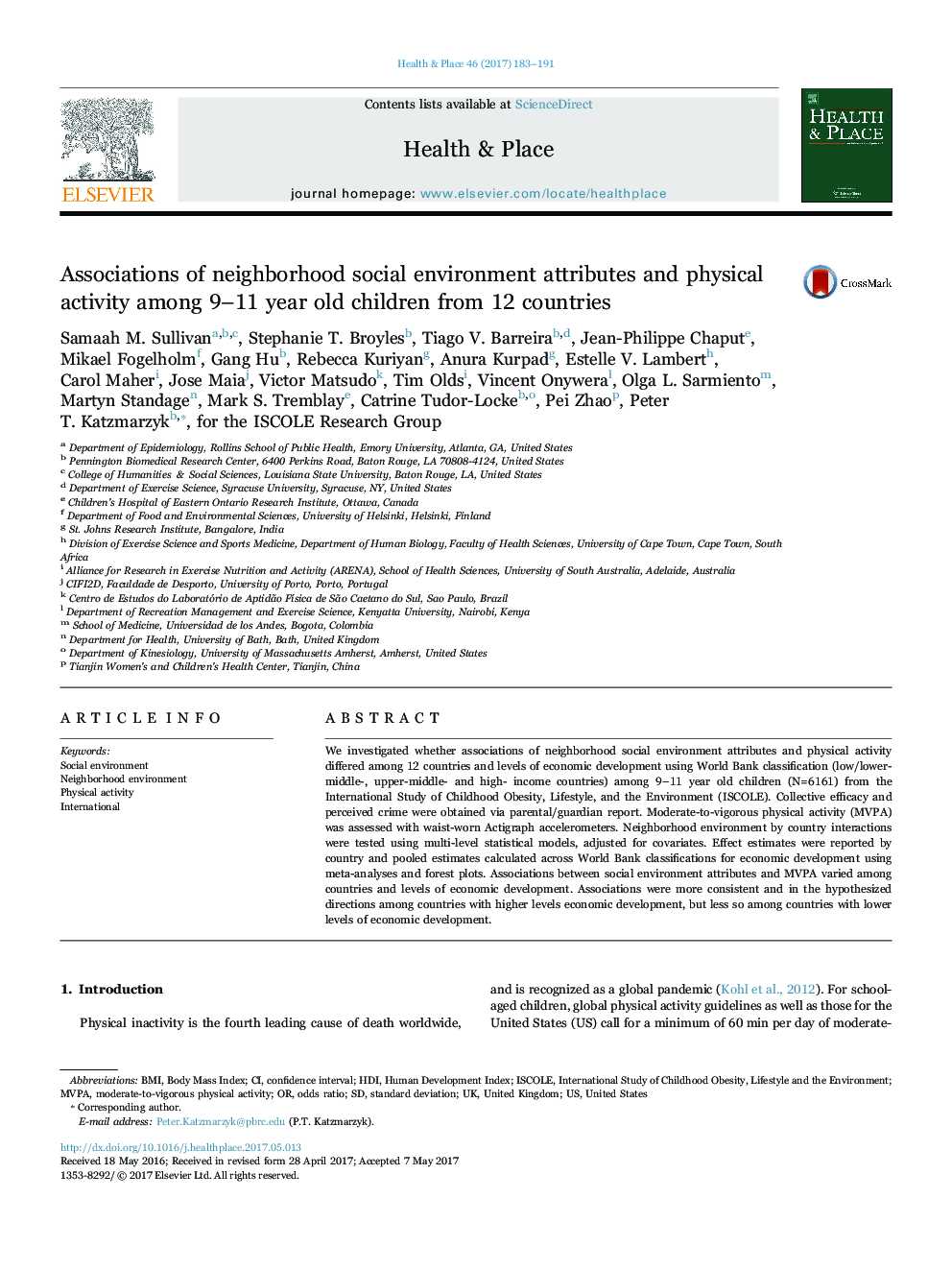| Article ID | Journal | Published Year | Pages | File Type |
|---|---|---|---|---|
| 5114837 | Health & Place | 2017 | 9 Pages |
Abstract
We investigated whether associations of neighborhood social environment attributes and physical activity differed among 12 countries and levels of economic development using World Bank classification (low/lower-middle-, upper-middle- and high- income countries) among 9-11 year old children (N=6161) from the International Study of Childhood Obesity, Lifestyle, and the Environment (ISCOLE). Collective efficacy and perceived crime were obtained via parental/guardian report. Moderate-to-vigorous physical activity (MVPA) was assessed with waist-worn Actigraph accelerometers. Neighborhood environment by country interactions were tested using multi-level statistical models, adjusted for covariates. Effect estimates were reported by country and pooled estimates calculated across World Bank classifications for economic development using meta-analyses and forest plots. Associations between social environment attributes and MVPA varied among countries and levels of economic development. Associations were more consistent and in the hypothesized directions among countries with higher levels economic development, but less so among countries with lower levels of economic development.
Keywords
Related Topics
Health Sciences
Medicine and Dentistry
Public Health and Health Policy
Authors
Samaah M. Sullivan, Stephanie T. Broyles, Tiago V. Barreira, Jean-Philippe Chaput, Mikael Fogelholm, Gang Hu, Rebecca Kuriyan, Anura Kurpad, Estelle V. Lambert, Carol Maher, Jose Maia, Victor Matsudo, Tim Olds, Vincent Onywera, Olga L. Sarmiento,
